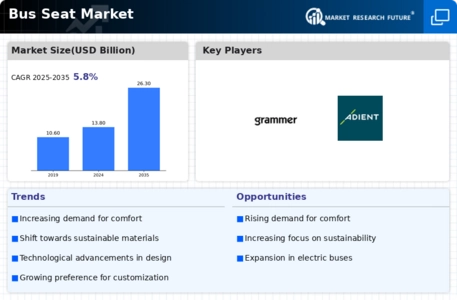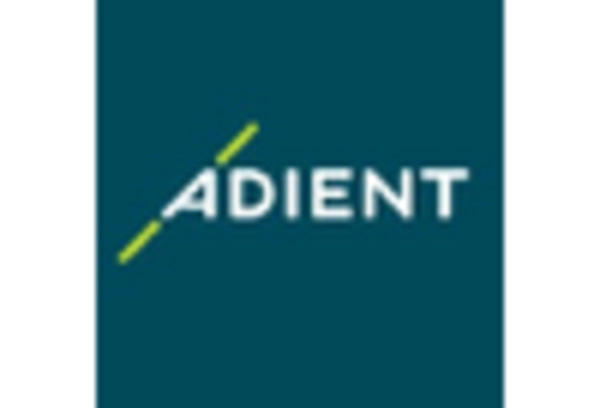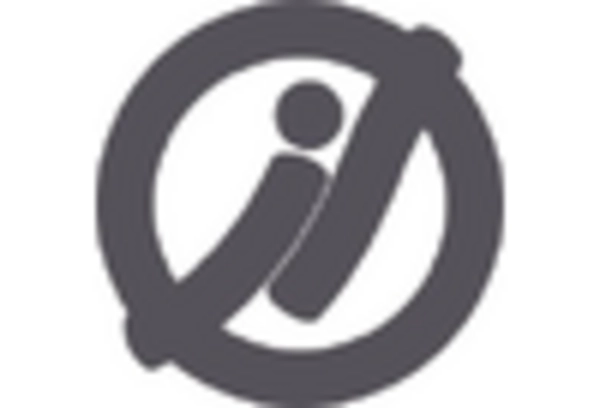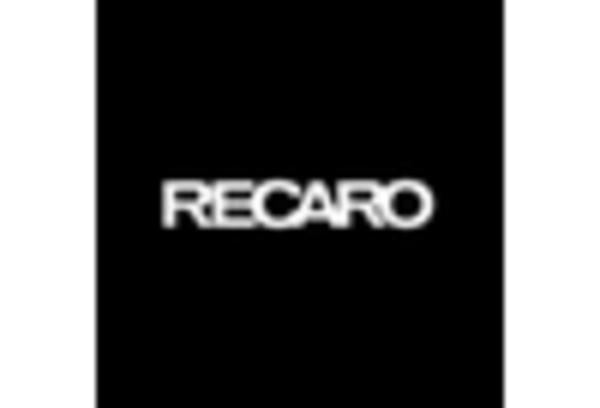Growing Urbanization
The increasing trend of urbanization appears to be a pivotal driver for the Bus Seat Market. As more individuals migrate to urban areas, the demand for public transportation, including buses, escalates. This shift necessitates the provision of comfortable and efficient seating solutions to accommodate a rising number of commuters. According to recent data, urban areas are expected to house approximately 68% of the world's population by 2050, which could lead to a substantial increase in bus ridership. Consequently, manufacturers in the Bus Seat Market are likely to focus on developing innovative seating designs that enhance passenger comfort and optimize space utilization.
Rising Environmental Awareness
The growing awareness of environmental issues is likely to impact the Bus Seat Market positively. As consumers become more conscious of their carbon footprints, there is a noticeable shift towards sustainable transportation options, including buses. This trend encourages manufacturers to explore eco-friendly materials and production processes for bus seats. For example, the use of recycled materials in seat manufacturing is gaining traction, aligning with the broader sustainability goals of many transportation agencies. This shift not only meets consumer demand but also positions the Bus Seat Market favorably in a landscape increasingly focused on environmental responsibility.
Increased Focus on Passenger Safety
Passenger safety remains a critical concern within the Bus Seat Market, influencing design and manufacturing processes. Recent regulations and safety standards have prompted manufacturers to enhance the structural integrity and safety features of bus seats. This includes the incorporation of advanced materials that provide better crash protection and the implementation of design features that minimize injury risks during accidents. Data suggests that regions with stringent safety regulations are witnessing a surge in demand for compliant seating solutions. Consequently, the Bus Seat Market is likely to see continued growth as manufacturers adapt to these evolving safety requirements.
Government Investments in Public Transport
Government initiatives aimed at enhancing public transportation infrastructure significantly influence the Bus Seat Market. Many governments are investing heavily in upgrading their public transport systems to reduce traffic congestion and promote eco-friendly travel options. For instance, funding for new bus fleets often includes provisions for modern seating solutions that prioritize passenger comfort and safety. This trend is evident in various regions, where public transport budgets have seen increases of up to 20% in recent years. Such investments not only improve the quality of service but also stimulate growth within the Bus Seat Market as manufacturers respond to the demand for advanced seating technologies.
Technological Advancements in Seating Design
Technological innovations are transforming the Bus Seat Market, leading to the development of advanced seating solutions. Features such as ergonomic designs, adjustable seating, and integrated technology for passenger convenience are becoming more prevalent. The integration of smart technologies, such as sensors for monitoring passenger comfort and safety, is also on the rise. This trend is supported by data indicating that The Bus Seat Market is projected to grow significantly, which could further drive innovations in bus seating. As a result, manufacturers are compelled to invest in research and development to stay competitive in the evolving Bus Seat Market.


















Leave a Comment